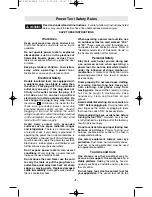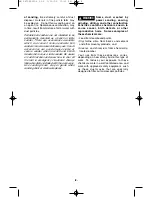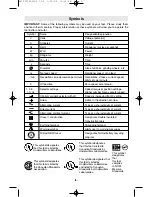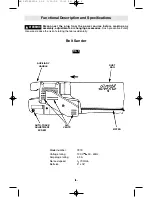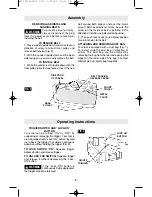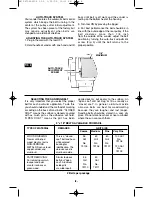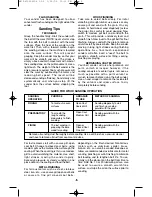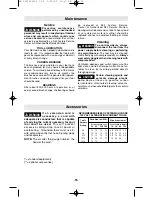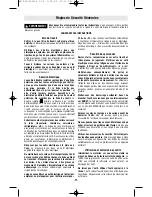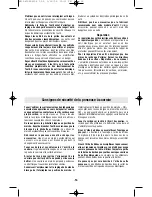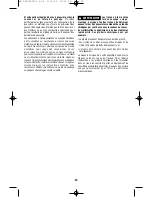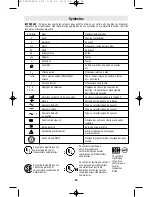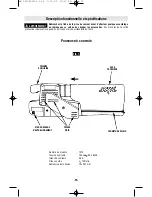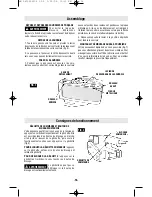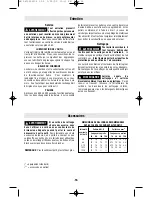
of sanding.
Be extremely careful of dust
disposal, materials in fine particle form may
be explosive. Do not throw sanding dust on
an open fire. Spontaneous combustion, may
in time, result from mixture of oil or water with
dust particles.
Portable belt sanders are not intended to be
permanently mounted as a bench or table
sander. There are accessories available
which can convert certain portable belt
sanders for occasional stationary use. If such
accessories are used always clamp or
secure sander when inverted and bench
mounted for use as a table sander. Be aware
of switch location and know how to shut off
the tool in emergency situations. Always
follow directions included with the accessory.
Use sanding fence, stop or guide when
sanding short or small workpieces.
Some dust created by
power sanding, sawing,
grinding, drilling, and other construction
activities contains chemicals known to
cause cancer, birth defects or other
reproductive harm. Some examples of
these chemicals are:
• Lead from lead-based paints,
• Crystalline silica from bricks and cement
and other masonry products, and
• Arsenic and chromium from chemically-
treated lumber.
Your risk from these exposures varies,
depending on how often you do this type of
work. To reduce your exposure to these
chemicals: work in a well ventilated area, and
work with approved safety equipment, such
as those dust masks that are specially
designed to filter out microscopic particles.
-4-
!
WARNING
SM 2610929106 3-05 3/15/05 10:33 PM Page 4


